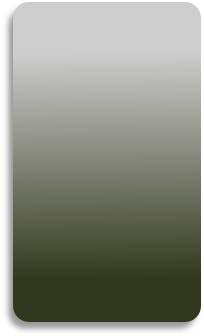
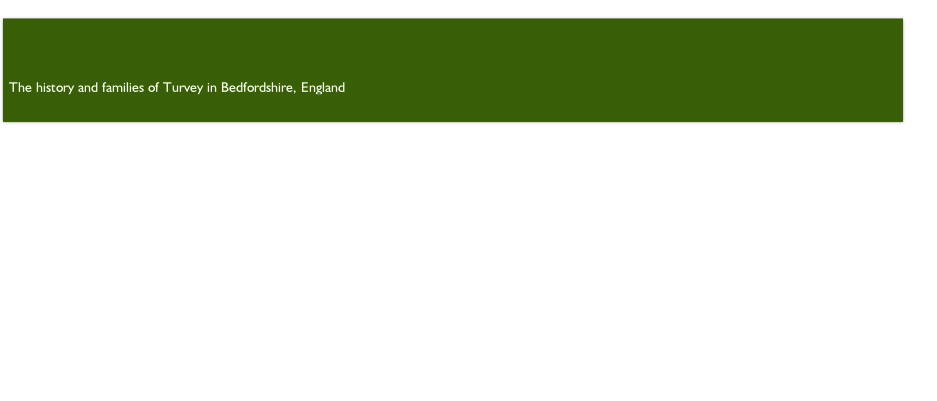
©2011 Deborah Richardson

Privacy Policy
Copyright

Turvey Abbey
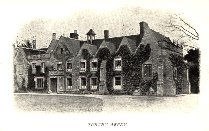
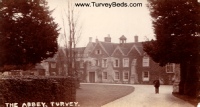
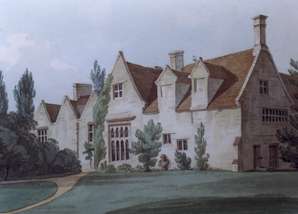
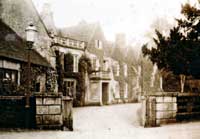
The Turvey Abbey Scrapbook
Various speculations
Attempted educations
By graphic illustrations
And several observations
On historic delineations
With private communications
And other examinations
Of minor considerations
Hope for remunerations
(For their supererogations)
From friendly approbations
Turvey Abbey was the home of Charles Longuet Higgins.
It is dated 1603 on the side facing the road and 1608 on the garden side. It underwent considerable additions in 1855 and 1860.
The picture on the left show how it looked in the 1700’s.
In the 1830's Charles Higgins compiled what he called 'The Turvey Abbey Scrapbook'
-
This remarkable collection can be seen in facsimile in the Bedford Record Office.
Particularly of interest are the beautiful sketches that Charles did of his servants
and villagers -
There are also maps, field rental information and all sorts of trivia on the village and its surrounds. I have included many quotes throughout these web pages.
Entrance to Turvey Abbey
In the garden of the Abbey there is a very small, Gothick gazebo.
It has the date 1829 inscribed above the door and it was built by the Longuet Higgens family.
The Abbey became a Benedictine Abbey in 1980 when three monks and fourteen nuns came from Cockfosters (North London) and took up residence.
The nuns call it a hermitage.
O Lord of hosts; that man is blest
And happy sure is he
That is persuaded in his breast
To trust all times in thee
Here you can find out more about the servants who worked for Charles Higgins, at the Abbey.
And here you can find more information on the current occupants of Turvey Abbey.
This is the inscription that runs around the four beams inside Turvey Abbey.
The Abbey was owned by Mr & Mrs Rupert Allen in the early 1950’s. Rupert Allen owned the Allen’s engineering factory in Bedford.
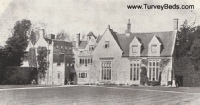
Here are two old postcards of Turvey Abbey. The top one is from 1904 and the lower one from 1915 (note the village postman making his rounds!)
Click either to enlarge it.
In 1901 Helen E. Higgins, was now 76 and living with three servants:
Eliza Thorpe, aged 63, the housekeeper
Sarah J Andrews, aged 27, the parlour maid
Emily E Gardner, aged 24, the house maid
In 1861 Charles Longuet Higgins and his wife, Helen, had three servants in The Abbey
Susan Blint, aged 30, the cook
Eliza Yallop, aged 25, the parlour maid
Emma Clifford, aged 20, the house maid
In 1871 the roles of the three servants who share Turvey Abbey with Charles and Helen are not stated on the census returns:
Emily Brittain, aged 26
Mary Swannell, aged 29
Lydia Jackson, aged 23
By 1881 Charles and Helen have three different servants:
Elizabeth A. Smith, aged 23
Sarah E. Butler, aged 32
Fanny Langley, aged 28
By 1891 Helen is widowed (Charles died in 1885). A blind, widowed 90 year old nurse called Lucy Archer is visiting her. Helen has four servants:
Eliza Thorpe, aged 53, the cook
Fanny Langley, aged 38, the house maid
Fanny Louisa Foddy, aged 25, the parlour maid
Lizzie Mott, aged 22, the Lady’s Maid
In 1841 Turvey Abbey is occupied by John Higgins (then aged 70) and his wife, Theresa. Their son Charles Longuet is 35 and living with them, as is his 30 year old sister, Mary. They have 4 servants:
Thomas Robinson, aged 48
Ann Seymour, aged about 20
Elizabeth Spencer, aged about 40
Sarah Sperrin, aged about 20
Ages could be rounded to the nearest 5 years for the 1841 census.
Coo, fancy that!
Since 1964, Turvey Abbey’s dovecot has been a Grade II listed building in its own right.
It dates from around the mid 1500s. It is square and made of coursed limestone rubble with an old clay tile roof.
There are two upper windows with little shutters and a low doorway.
There are gabled dormers with louvres.
It no longer belongs to the abbey and is in Jack’s Lane.
